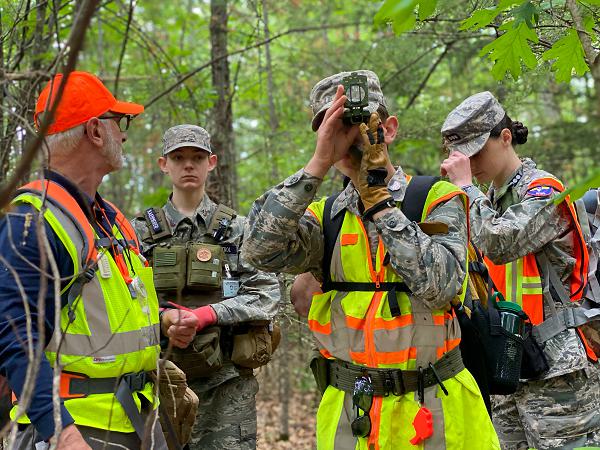
Maxwell Air Force Base, Alabama. (March 31, 2024): In the above photo, members of the Air Force Civil Air Patrol (CAP) practice land navigation as part of search and rescue training held here recently. During the exercise, volunteers used a compass while conducting a search and rescue in a lost-person scenario, a typical emergency in which the patrol is called on to assist.
The CAP is a federally funded non-profit corporation that serves as the Air Force auxiliary that supports America’s communities in an emergency. CAP is a volunteer organization with an aviation-minded membership of cadets ranging from twelve to just under 21 years of age. The CAP is a major operator of single-engine general aviation aircraft used in the execution of its various missions, including orientation flights for cadets and the provision of emergency services. Because of these extensive flying opportunities, many CAP members become licensed pilots.
Civil Air Patrol was conceived in the late 1930s to supplement America's military operations. During World War II, the CAP was seen as a way to use America's civilian aviation resources to aid the war effort. The organization assumed many missions during the war including anti-submarine patrol and warfare, border patrols, and courier services. According to the Department of Defense, the CAP’s coastal patrols flew 24 million miles, sighting 173 enemy U-boats, and dropping a total of 82 bombs and depth charges.
After the war, the CAP reverted to a peacetime only mission as the official Air Force Auxiliary that provides emergency response using diverse aviation assets. Today, CAP has more than 38,000 adult members and 28,000 cadets stationed at its 1,500 chapters. These volunteers fly a wide range of missions from disaster response to drug interdiction and they educate youngsters on air, space, and cyber aspects of the Air Force.
The CAP operates in all fifty states and the District of Columbia and Puerto Rico. The patrol is often called upon to transport vital supplies in support of the Red Cross, Salvation Army, and other civilian relief agencies after natural disasters. Using its diverse aviation units, the patrol can transport medical technicians, medication, and other vital supplies into hard-to-reach areas in an emergency.
Americans know they can count on the CAP to save lives when disaster strikes.


